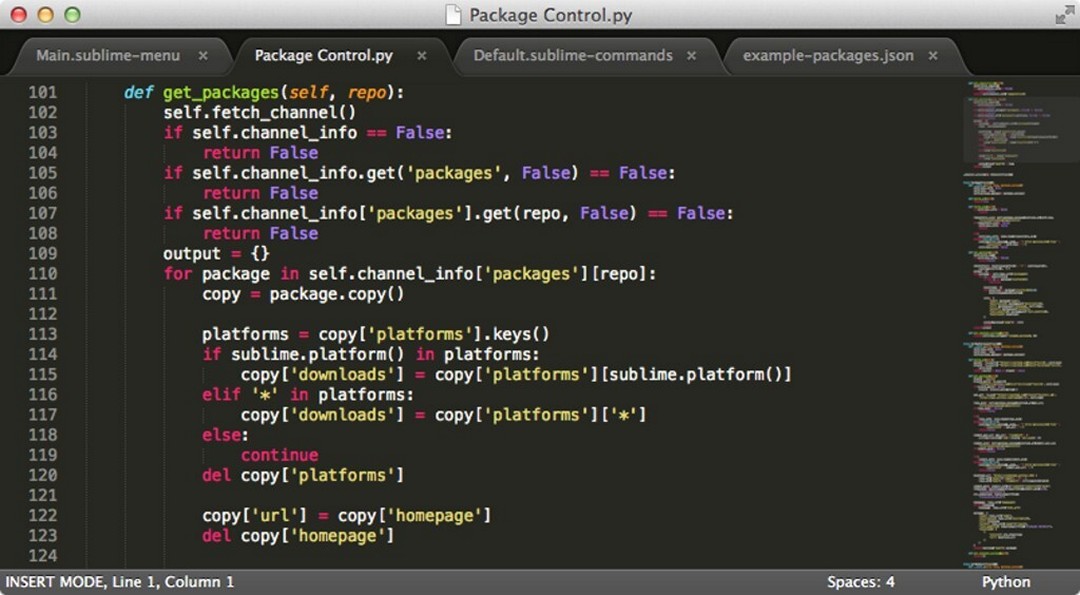
- #Sublime text install windows how to#
- #Sublime text install windows update#
- #Sublime text install windows software#
- #Sublime text install windows download#
#Sublime text install windows how to#
Package Control List PackagesĪt last, you’ve learned how to install Sublime Text 4 using not just the installer package file but also using a package manager like Snap. Edit Git in Sublime TextĪlternatively, you can also use the Package Control option “ List Package” in Command Palette to display all installed packages.


Now, you can open the settings file of the Git package to edit and make it work as per your need. Once installed, go to Preferences -> Package Settings – which will display all installed packages in Sublime Text. Select the result and it will install the plugin in a few seconds in the background. Here you can search for your required package as I did for the “ Git” file management tool. One such option is Install Package, which you can select that will pop up another window containing a list of all available packages. Then, search for “ package control” in Command Palette, which will list all available Package Control options to carry operation.

Now, you can install a plugin by first opening Command Palette using the shortcut CTRL + SHIFT + P or going to Tools -> Command Palette menu. So, let’s first install Package Control by opening the Tools menu and selecting Install Package Control.
#Sublime text install windows update#
Instead of manually installing plugins, package control is a package manager for Sublime Text that lets you find, install, and update packages within the application. Let’s start with a very important feature of Sublime Text, which helps it to bring additional functionality to your needs using plugins. Sublime Text 3 is available as Flatpak, which you can install by running the command: $ flatpak install flathub But unfortunately, as I’m writing this article, Sublime Text 4 is not available as a Flatpak package on the Flathub repository. Similar to Snap, Flatpak is also yet another popular universal package manager available for almost all Linux distributions. Install Sublime Text 4 in Linux Using Flatpak In case, you don’t have Snap, you still can install Snap by following the official snap documentation. So, if you already have Snap on your system, run a single command to install Sublime Text 4: $ sudo snap install sublime-text -classic Surprisingly, Snap is pre-installed on some Linux distributions like Ubuntu, Manjaro, KDE Neon, and Zorin OS. Snap is a universal package manager that can be used on all major Linux distributions, including Ubuntu, Linux Mint, Debian, and Fedora. Install Sublime Text 4 in Linux Using Snap Install Sublime Text 4 in RHEL Ditros $ sudo rpm -v -import $ sudo apt-get install apt-transport-https $ echo "deb apt/stable/" | sudo tee /etc/apt//sublime-text.list Install Sublime Text 4 in Debian Distros $ wget -qO - | gpg -dearmor | sudo tee /etc/apt//sublimehq-archive.gpg > /dev/null Instead of downloading the official DEB/RPM package or tar file, you can also use the respective package manager like APT for Debian-based and DNF for RHEL-based distros to install the Sublime Text 4 editor. Install Sublime Text 4 In Linux Using Repository So, we can also use the bundled tar file to run Sublime text on Linux.ĭownload the tar file, decompress it manually and run it by running the commands in the terminal: $ tar xf sublime_text_build_4143_圆4.tar.xzĪs you can see, the command will launch the Sublime Text 4 application in Linux.
#Sublime text install windows download#
On the same download page, apart from DEB/RPM, you might have also noticed the tar file also available. Install Sublime Text 4 in Linux via Tarball Install Sublime Text DEB FileĪlternatively, you can also use command line tools like DPKG for DEB and RPM for RPM installer files by executing the below commands: $ sudo dpkg -i.

#Sublime text install windows software#
Now, go to the directory where you downloaded the file, right-click on the file, and choose the “ Open with other application” option, which will prompt a dialog to open DEB/RPM file with the respective default Software Installer.


 0 kommentar(er)
0 kommentar(er)
